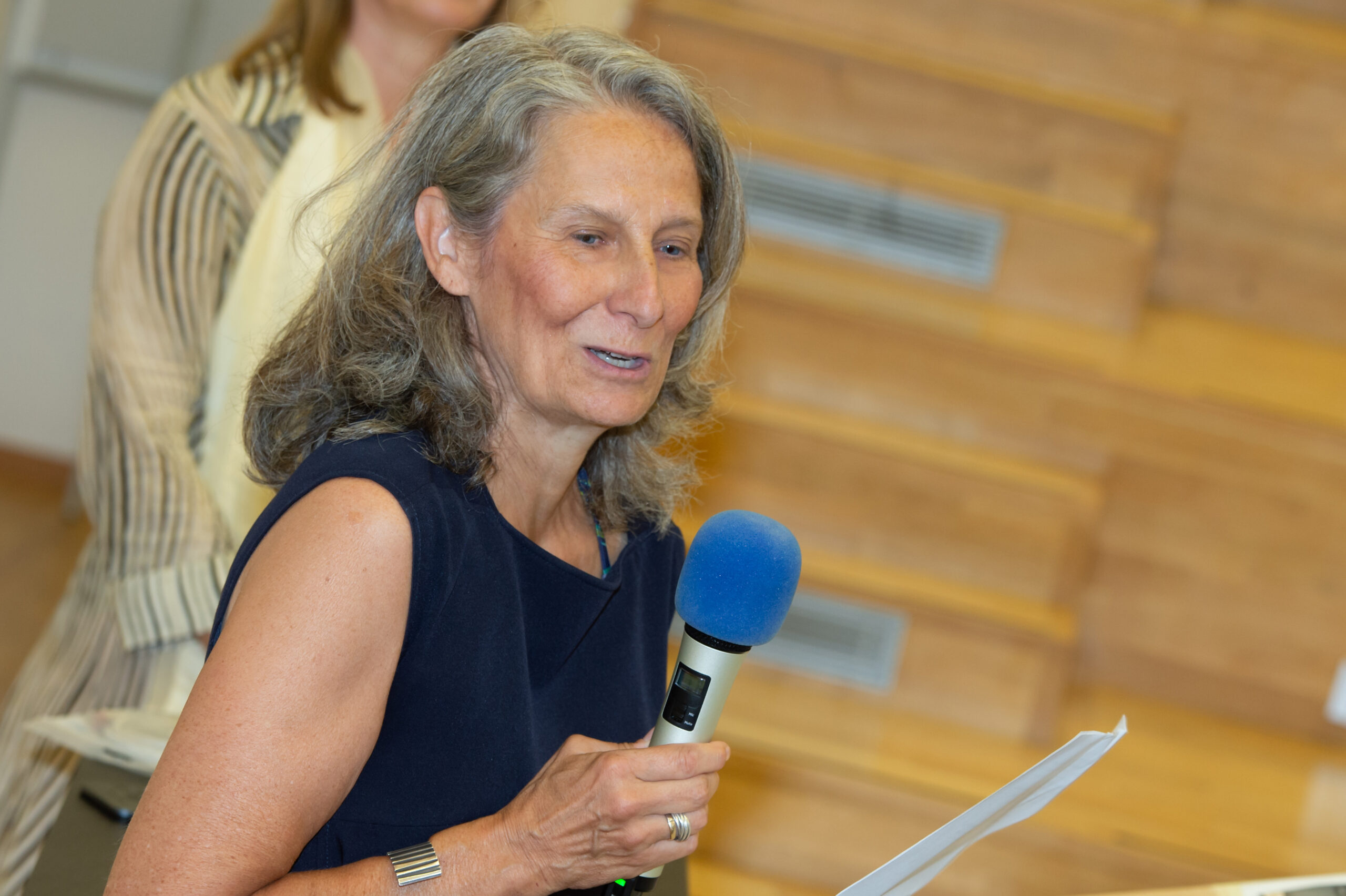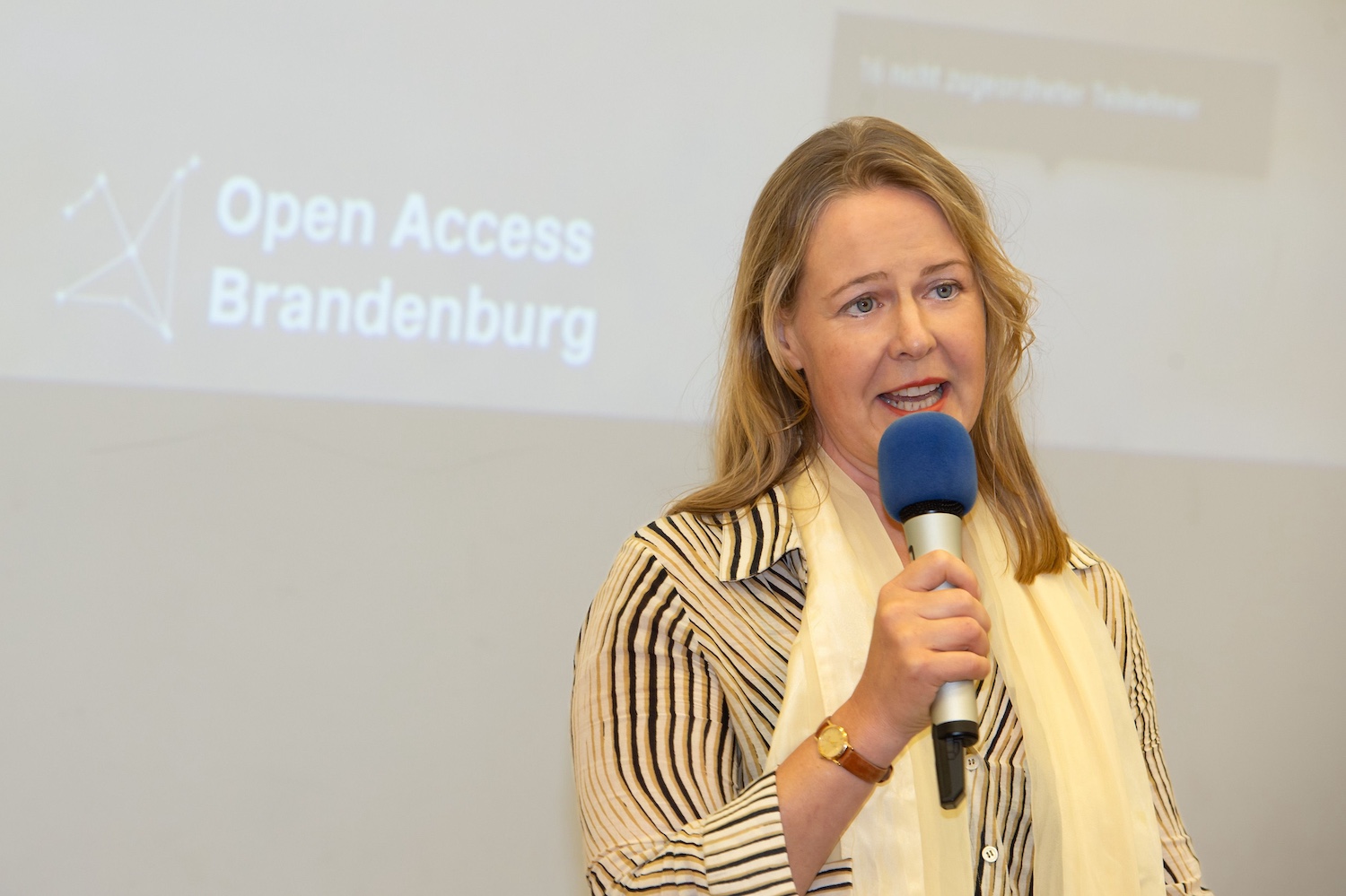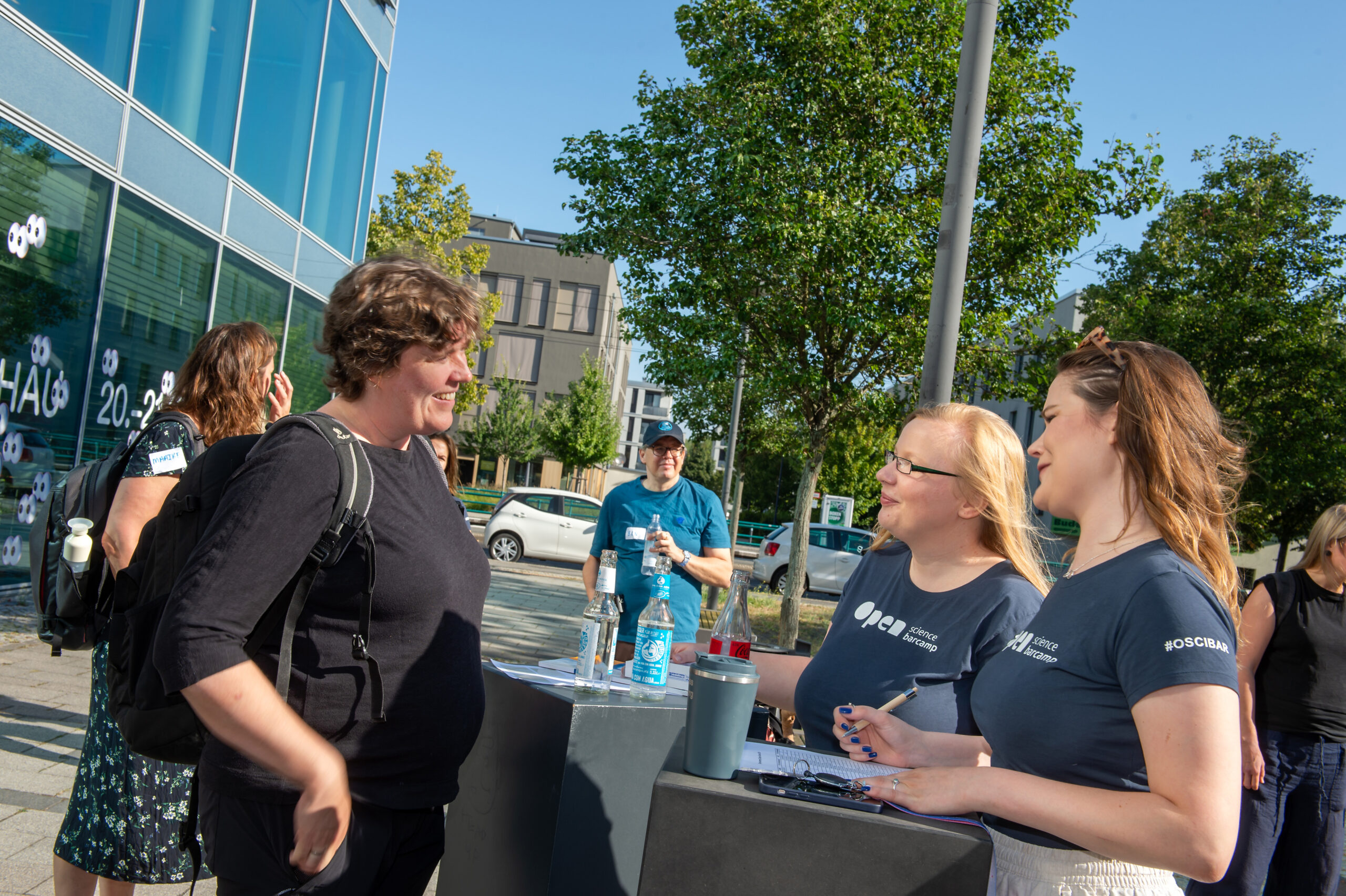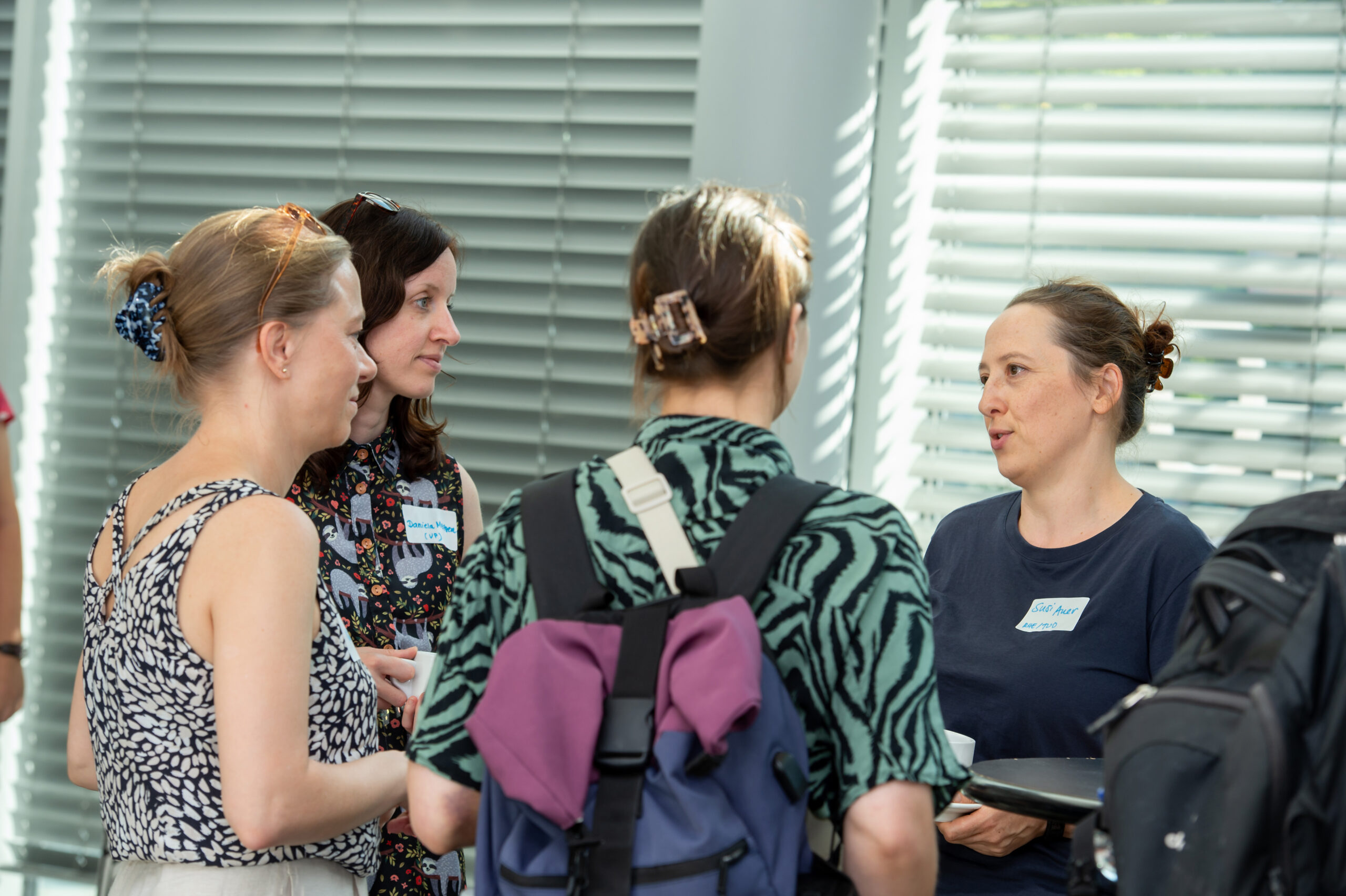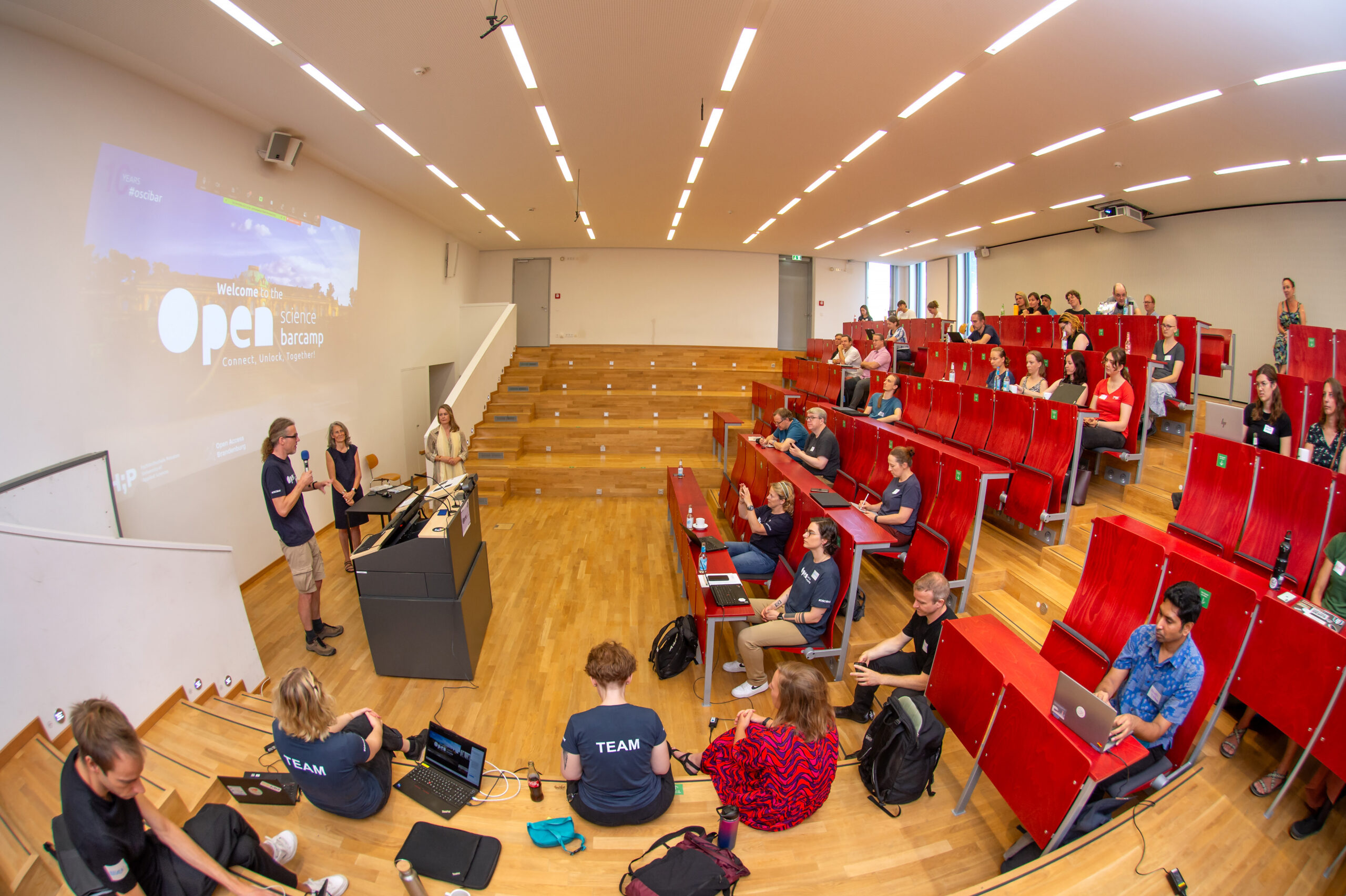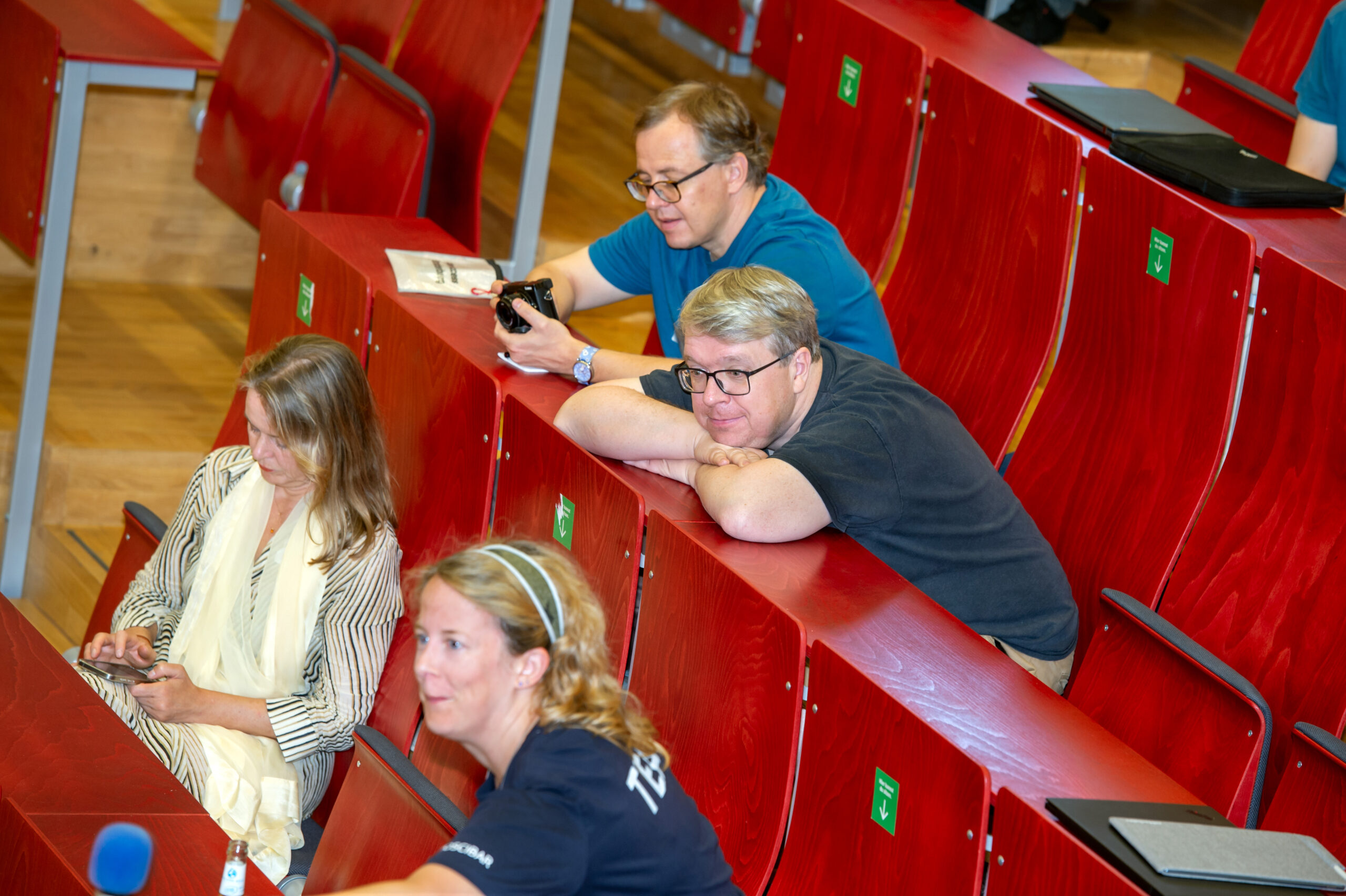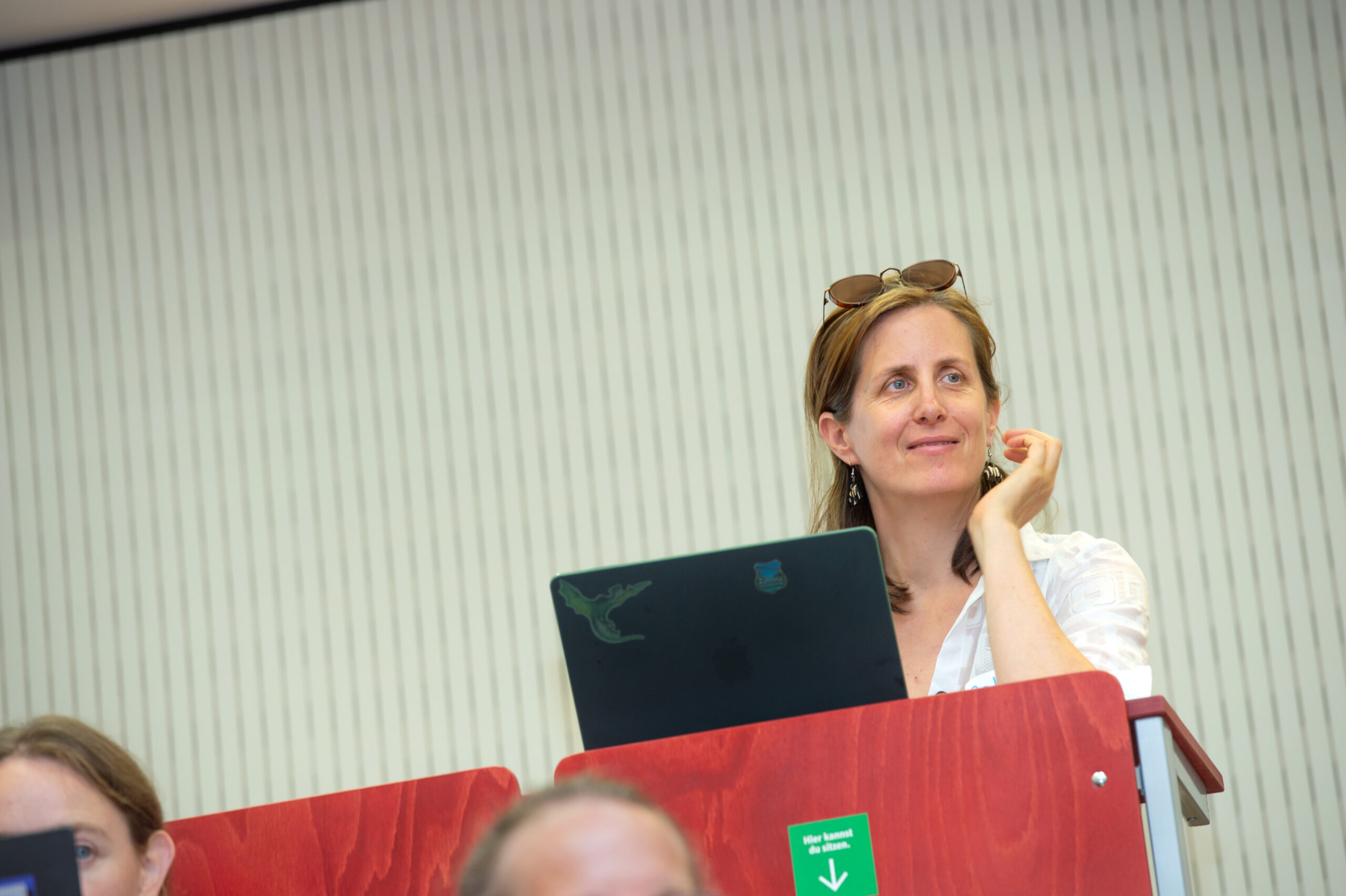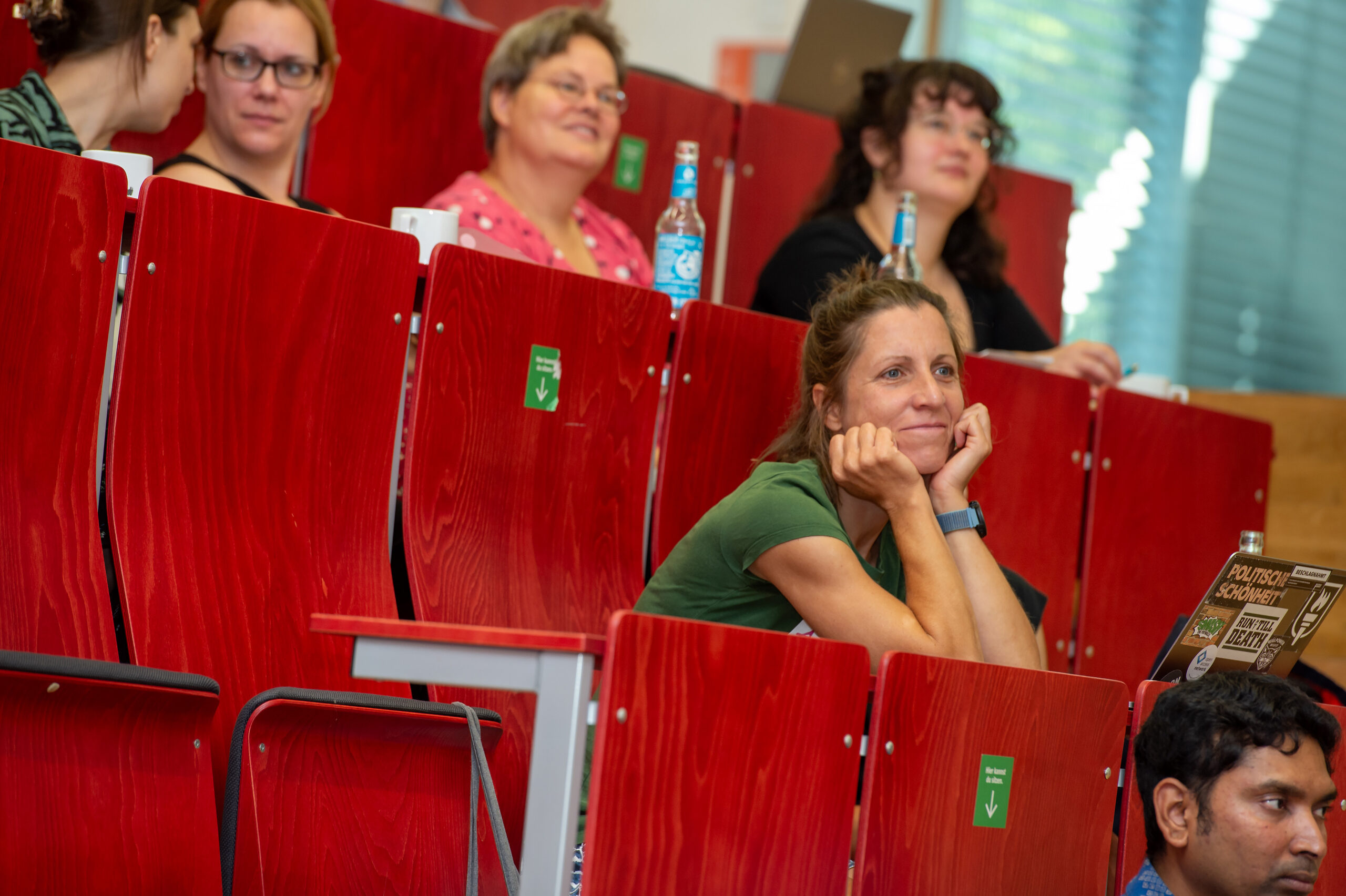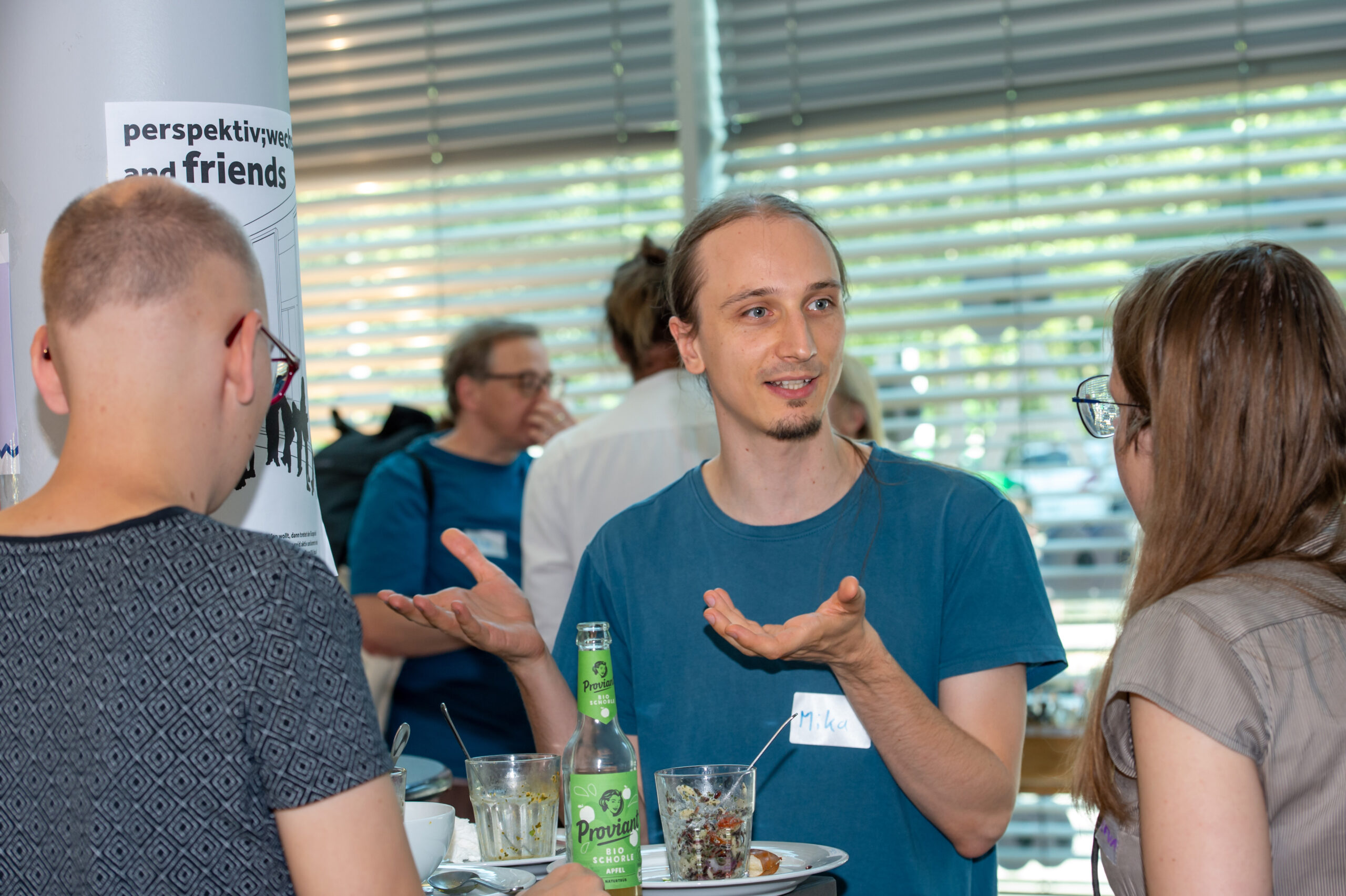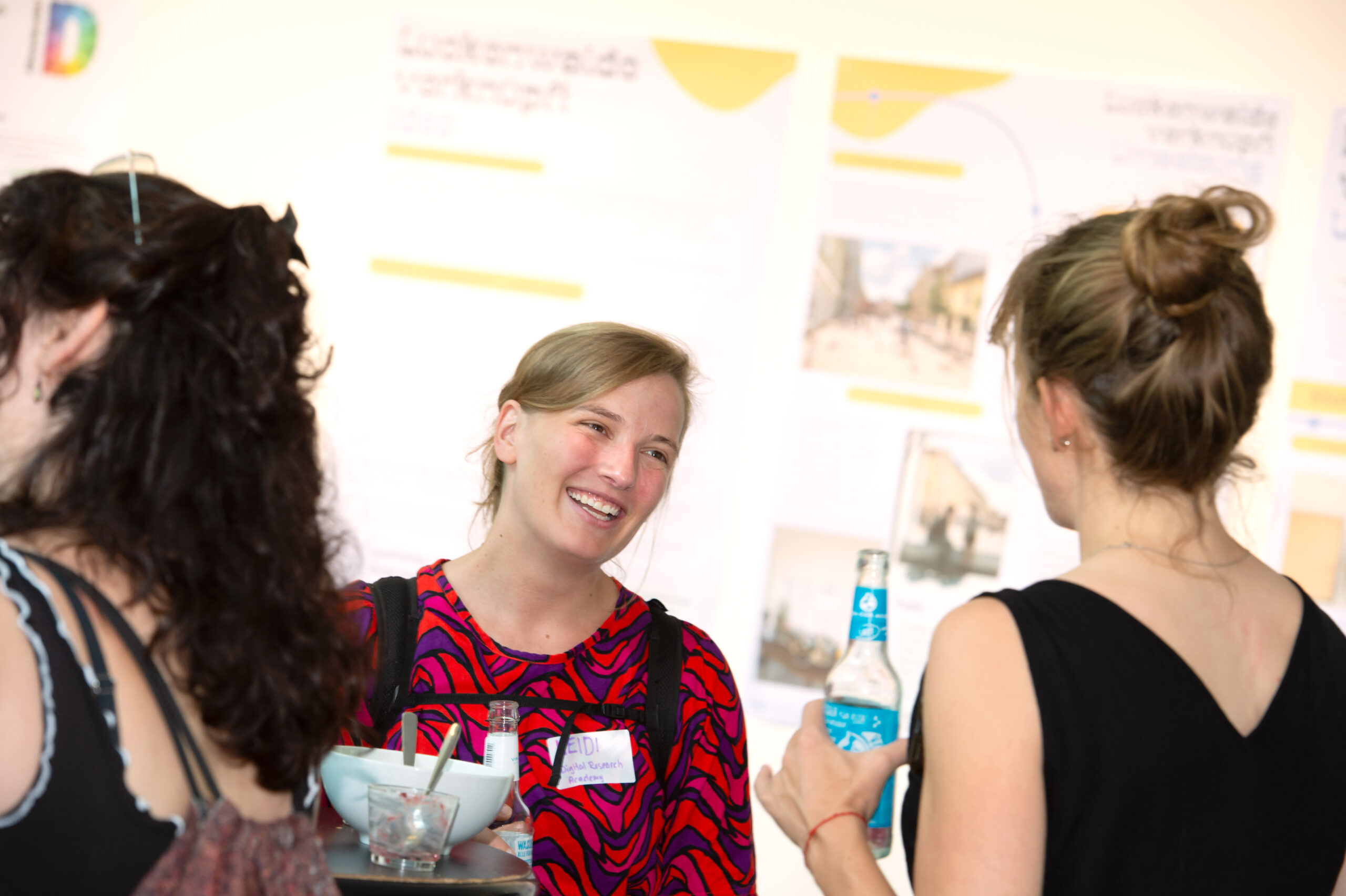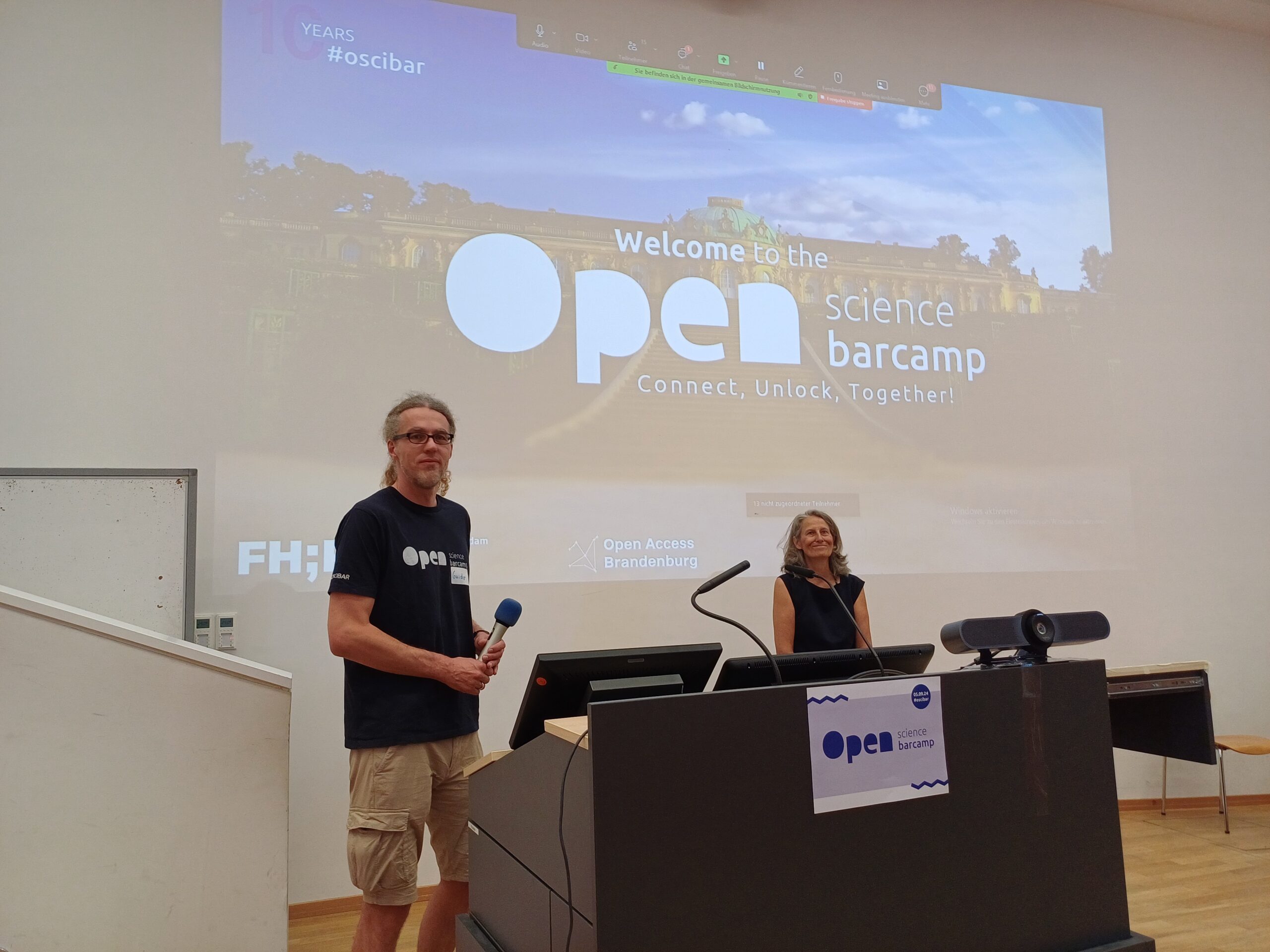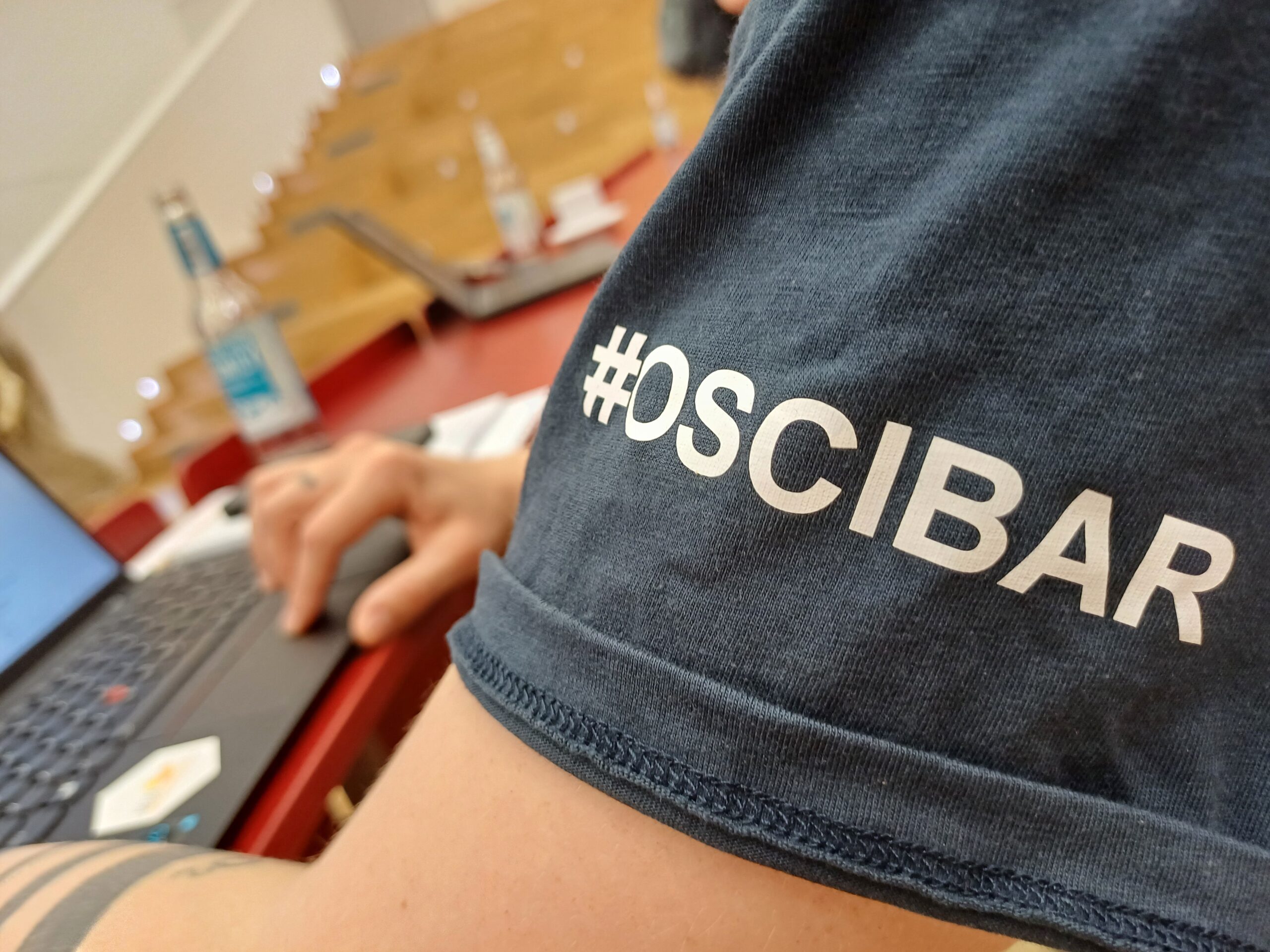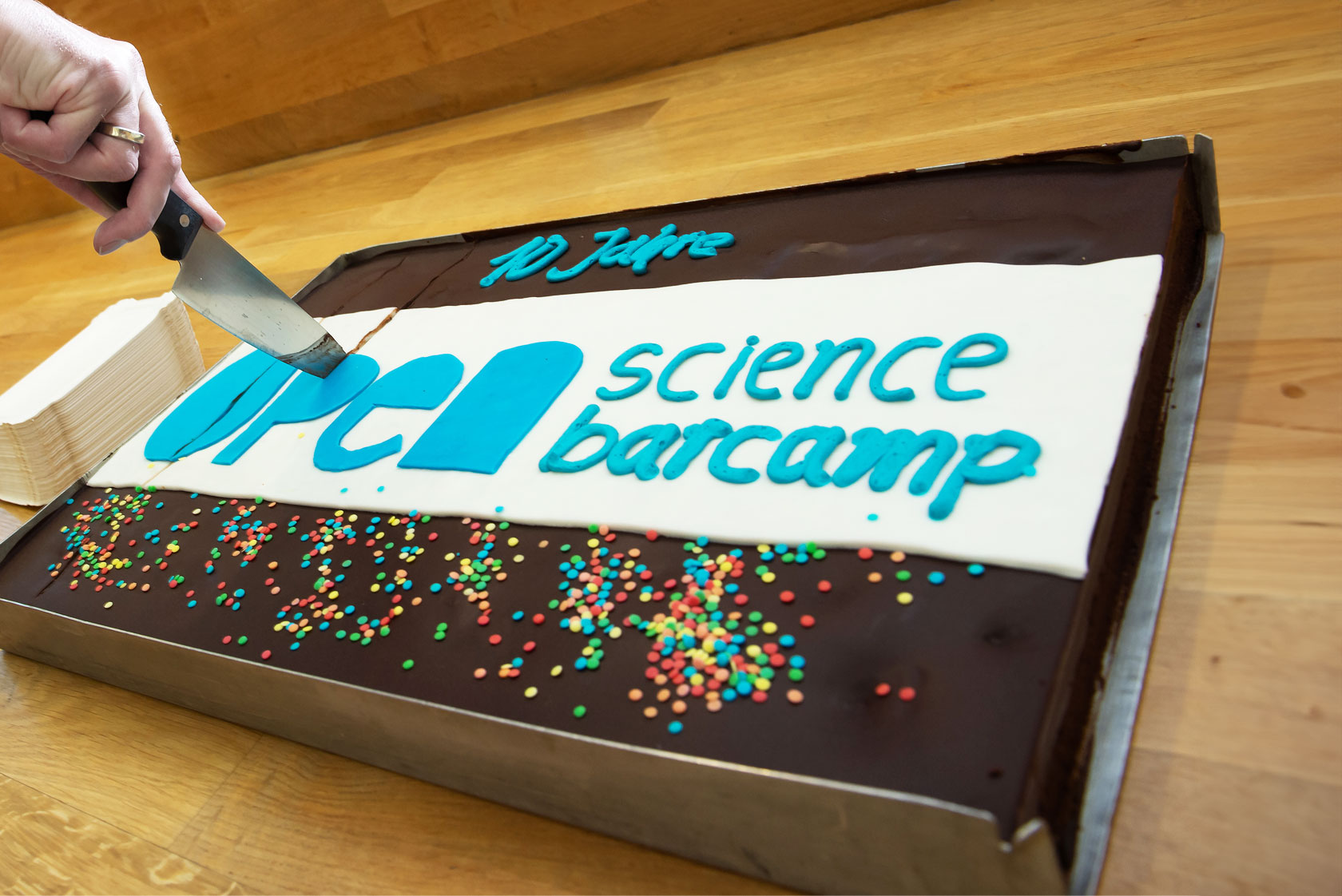
Barcamp Open Science 2024: Happy Birthday!
This year, the Barcamp Open Science (#oscibar) celebrated its 10th anniversary. Open Science Success stories, where and who are our re-users and Open Science in universities of applied sciences were only a small selection of the topics discussed. With the support of several session moderators, we summarise what was discussed in some of the sessions during the anniversary Barcamp.
by Susann Auer, Tamara Heck, Constance Holman, Ben Kaden, Friederike Kramer, Mika Pflüger, Guido Scherp, Heidi Seibold, Claudia Voigtländer, Anja Zeltner
Happy Birthday, Barcamp Open Science! Yes, there was some celebrating this year, even with a bit of cake. Reaching the 10-year mark makes the organising team quite proud. This year, the Barcamp was hosted at the University of Applied Sciences Potsdam, thanks to a swift initiative by Ellen Euler, Professor of Library Science, and the subsequent wonderful collaboration with Open Access Brandenburg. It was a special honour having the president of the University of Applied Sciences Potsdam, Eva Schmitt-Rodermund, personally open the Barcamp Open Science. She could not have summed up the idea of this Barcamp any better:
“The goals of this Barcamp are simple yet profound: to share knowledge and to develop ideas together. For the duration of this event, the University of Applied Sciences Potsdam becomes a laboratory for ideas in the field of Open Science — a place where new concepts can be explored and where the spirit of openness can flourish.”
How Open Science is understood and discussed, and which topics are relevant, has evolved tremendously over the past few years. Open Science has become more multifaceted and is closely interwoven with various aspects of the science system such as participatory science, knowledge equity, employment contracts and tackling societal challenges such as the climate crisis. This year’s Ignition Talk by Heidi Seibold on “Between Rigor and Equity – the ‘Open’ in Open Science” (recording/slides) tied in wonderfully with this.
Heidi began by stating that many researchers enter science with the goal of creating new knowledge. However, the deeper one delves into research, the more evident it becomes that there are weaknesses and problems, such as insufficient reproducibility and poor quality in some studies. This personally affected her and led her to question how research could be improved. Open Science is the solution.
Firstly, it promotes research quality in science. Research today is highly complex and presents many challenges, such as documenting processes and managing errors. In her view, Open Science provides opportunities to make access to data, code, and research results easier for everyone, as these are often restricted by costs or access barriers.
Another aspect is improving equity in research, both in terms of access to research findings and in recognizing research outputs like data and software. These should not be considered secondary products but recognized as equally valuable scientific outputs.
Heidi also addressed the obstacles to Open Science, such as a lack of incentives and resources. Many researchers, due to time or financial constraints, cannot fully engage with Open Science, and much of the work is done on a voluntary basis. Further, it’s important to ensure that Open Science itself does not lead to inequities.
Overall, Heidi declared Open Science as a means to improve both research quality and equity in research. Inspired by this talk, 14 sessions on various Open Science topics took place over the course of the day. Most of them are summarised below by their session moderators. We will report on four sessions in separate blog posts later, namely “Shadow Libraries – Plan B for the Open Access Transformation?”, “Multilingualism in Academia”, “Open Science and Scholars at Risk” and “Research Data Act“.
Success Stories From Open Science Practices ed.2
by Susann Auer
Implementing Open Science practices in your workflows is a worthwhile endeavour, yet, still not enough researchers are convinced that it is worth to change their research practice – after all, what do they gain when they practise Open Science?
We therefore met in this session to collect success stories from people practising Open Science to make the benefits more tangible to people who are still on the fence about it. This is especially important when talking to established researchers who don’t see the need to change their traditional way of working and might prevent younger scientists from implementing Open Science practices.
First, we defined what a success story is – basically anything you or other people did in the Open Science context that positively impacted your or other people’s work and careers. The goal behind this session was to turn success stories into testimonials at some point that everybody can share across their networks and hopefully be able to convince more researchers to choose that road.
With a diverse set of people in the session, the success stories shared varied a lot and showcase how far-reaching the impact of doing Open Science can be. A recurring theme across all shared stories was the feeling of gratification and validation many felt when they worked on their Open Science projects and got positive feedback from peers or people outside of their own community.
A few examples:
- We heard about a student project in the arts which consisted of an art installation that was fully documented with code and descriptions and thus is reproducible for everyone using the same resources. The download numbers of their shared resources show the visibility of the project and hint to an intent of re-use by other artists.
- Profound Open Science experience triggered a career shift – from scientist to entrepreneur – and led to the founding of the Digital Research Academy (DRA). The DRA is a trainer network that offers consulting services and workshops on Open Science topics.
- A self-teaching course on Open Educational Resources won a teaching prize, a great recognition for a well thought out teaching resource.
Overall, practising Open Science does not only benefit the individual who actively practises it, it can have unforeseen positive impacts on others who benefit from accessibility and openness of the work. One recent example are disadvantaged communities from the Global South who are routinely excluded from major scientific work due to a lack of access to research and often a lack of training in good scientific practice. The recently founded African Reproducibility Network AREN benefits from trainers mostly from the Global North who freely share their experience and currently train a diverse cohort of African researchers in a large variety of Open Science topics.
Open Science in the Context of Universities of Applied Sciences
by Constance Holman
Universities of Applied Sciences (UAS) have, until recently, not been featured prominently in discussions surrounding Open Science in Germany. Speaking broadly, these institutions have a smaller focus on research compared to “traditional” universities, instead focusing on teaching and providing students with first-hand experience in industry or other spheres. In recent years, interest in Open Science has been growing at UAS, yet it is increasingly obvious that solutions and approaches are not “one size fits all” (see also notes from the session “Open Science beyond STEM – in search for a Middle Ground” below). In this session, participants from academic institutions in Berlin and Brandenburg, as well as representatives from several Open Science networks came together to discuss challenges and opportunities particular to the UAS community.
We learned that several institutions have been or are currently working on an Open Science policy. Many applauded these steps and also recounted how having commitments on paper is a critical tool for advocating for change in their research communities. However, others expressed their frustration with policies that do not keep in step with the allocation of personnel, resources and (especially) research infrastructures.
As always, we noted that Open Science is a matter of changing culture. This is particularly true for researchers at UAS (and related institutions) who do not rely as heavily on peer-reviewed publications as their university counterparts. We were reminded of great allies and resources from organisations such as the NFDI and Helmholtz, as well as countering misconceptions such as that industry partners are categorically opposed to Open Science activities. We also acknowledged the importance of community building, both within and across institutions. Even for diverse research contexts such as UAS, it is rare that one has to completely reinvent the wheel. However, as one participant noted, community building in this context is a marathon, not a sprint.
At the end of the session, one hopeful thought prevailed: Participants noted that UAS are already home to a wide variety of Open Science practices – they just aren’t immediately labelled as such by their practitioners! Recognizing and rewarding activities in fields such as Citizen Science or Open Educational Resources is an important step to including UAS in discussions surrounding Open Science, and giving them a platform to share their expertise with the broader community.
Where and who are our Re-users?
by Ben Kaden
The session explored the concept of reuse of Open Data in research, particularly focusing on how research outputs can be made available and useful for specific audiences, or communities of practice, beyond generic scenarios. It highlighted several challenges, including ensuring data findability, accessibility, providing context and documentation, applying appropriate licences, and using open file formats.
In its course, the discussion addressed various issues of data reuse, including the question of audiences and reuse settings. Understanding specific audiences and their intentions for reusing research material is crucial. This includes considering disciplinary aspects and the challenges of reaching a “general public” without dedicated intermediaries and communication strategies. While the promise of open research often is very inclusive, in reality communicating science to and engaging with non-academic audiences requires additional translational work. Making data and other resources simply available is not sufficient. Rather, the research logic, methodological specifics and the limitations of the respective research approaches must also be provided in an easily understandable context.
Other challenges in promoting reuse include ensuring findability, retrievability, and searchability of reusable material, as well as providing high-quality metadata and documentation. Another part of the discussion focussed on strategies to encourage reuse. Provision alone is often not very effective. In this context, the expansion of reputation measures and the recognition of reutilisation as a distinct scientific achievement are also relevant. Possible strategies are publishing on established platforms within specific communities. Also, it helps to focus on the high-quality presentation of research data and to develop appropriate citation and evaluation standards.
Another important aspect is differentiating possible types of reuse. The discussion touched on differences between reproduction, replication, and reutilisation, again emphasising the need to consider the purpose and potential reuse scenarios when publishing data.
In conclusion, there were two main areas for further exploration: firstly, monitoring and documenting actual reuse, and secondly, better defining the concept of “general public” in the context of Open Science. The discussion emphasised the importance of tailoring data presentation to specific audiences and purposes, as well as the need for dedicated competencies and education in preparing and communicating research data for reuse.
Open Science and Open Access Networking and Competence Centres
by Anja Zeltner
In 2016, the German Federal Ministry of Education and Research encouraged the establishment of Open Access networking and competence centres at the level of the federal states to promote Open Access to academic publications. These centres developed Open Access strategies, implemented basic practices, and established positions in higher education institutions. Eight years later, some of these centres aim to expand their focus to include Open Science and research policies. The challenge, however, is to build communities of practice in Open Science without losing the original emphasis on Open Access.
Representatives of various Open Access networking centres discussed this challenge and concluded that there are better solutions than merely rebranding the centres. Given the limited resources available and existing skillsets mostly geared towards Open Access, the feasibility of expanding the focus to Open Science should be carefully considered. While Open Access offices can act as networkers and mediators, their authority may be limited in regions where agreements are made directly between the state and universities.
The success of the Open Access strategy has prompted considerations for new priorities, such as Open Science. However, it is important to carefully consider whether Open Access offices should stay within their core topic or expand their focus to include Open Science. In principle, the latter would require a new or at least adapted science policy framework and corresponding specific allocations of resources.
Open Science Beyond STEM – in Search for a Middle Ground
by Friederike Kramer, Heidi Seibold, and Claudia Voigtländer
How can we support researchers from non-STEM disciplines and also support each other on our roads to an equitable Open Science, broadening our horizons on different research cultures and practices?
We believe discussing what challenges disciplines beyond STEM face during this Open Science transformation can help unmask possible biases in the Open Science community that developed its underlying concepts of openness mainly based on challenges in STEM-related publication cultures and markets. We also believe that the difficulties of thereby “othered” disciplines to implement certain Open Science practices are due to this normalisation of particular research cultures and their production modes by the community in shaping the Open Science transformation – and should not be reduced to fears of change or of the loss of appreciation and reputation.
In this spontaneous session, we assembled and discussed examples for research practices and situations that cannot simply be projected onto established Open Science strategies although they represent aspects of scientific openness, like:
- different data formats and publication processes
- connectedness to creative industries that operate without public funding
- absence of a reproducibility crisis in the arts & humanities
- transdisciplinarity
- post-publication review modes that are currently (re)introduced unacknowledged as Open Peer Review
- participatory research approaches in social research
- or simply the necessity to work unfunded.
In the end, we had to face how difficult it is to interrogate one’s own perspective and that much more symmetrical exchange is needed among the disciplines, to bring to the table the multitude of approaches to knowledge production that is required to truly rethink and reassemble scholarly communication for an era of Open Research.
Monitoring Open Science Practices
by Tamara Heck
Open Science seems to be endorsed in the research communities. Many institutions have written statements and policies addressing the dimensions of Open Science. Additionally, surveys show that researchers have a positive attitude towards Open Science. However, we do not have yet evidence that Open Science is advancing as a default for good scientific practice in science. Monitoring the progress and impact of activities aiming to foster Open Science – like strategy and policy actions and supportive services – is crucial to evaluate our way to open up research. However, the question is how Open Science practices should be monitored in a fair and desired way. The session participants collected current discussion papers and initiative to monitor Open Science (see links in pad). Besides the CoARA initiative, one relevant paper is the UNESCO draft, whose initiators are currently asking for feedback from the Open Science community.
The group discussed the risks of misinterpreting quantitative Open Science indicators, emphasising the different disciplinary cultures and the challenges when comparing them based on simple indicators, as well as the difficulty to get full and comparative data to measure Open Science practices beyond Open Access publications. Regarding the different top-down and bottom-up initiatives, it will be thrilling to see how Open Science monitoring will be conceptualised and who will implement it in the near future.
Collaborative and Open Data Development
by Mika Pflüger
So far, Open Data efforts have focussed on the open publication and sharing of data after it has been deemed “finished”. For example, many widely used tools and repositories such as Zenodo have no integrated features for collaboration. In this session, we focussed on practices and processes for open collaboration on research data during the research process. We discussed use cases in climate policy data and astrophysical data. We noticed that data sharing and collaboration workflows today are very different between disciplines, and even within disciplines for specific data types. For successful collaboration, standardisation of data formats, tools and repositories are necessary, which often derives from discipline-specific traditions. Additionally, workflows are different due to different data size and therefore storage requirements. Unfortunately, successful workflows are therefore usually not easily transferable as a whole to other disciplines or data types, but a mix-and-match approach is promising.
To the Next 10 Years!
We also used the anniversary as an opportunity to offer a dedicated session (pad) on the future of the Barcamp. What ideas do the participants have in mind for the next 10 years?
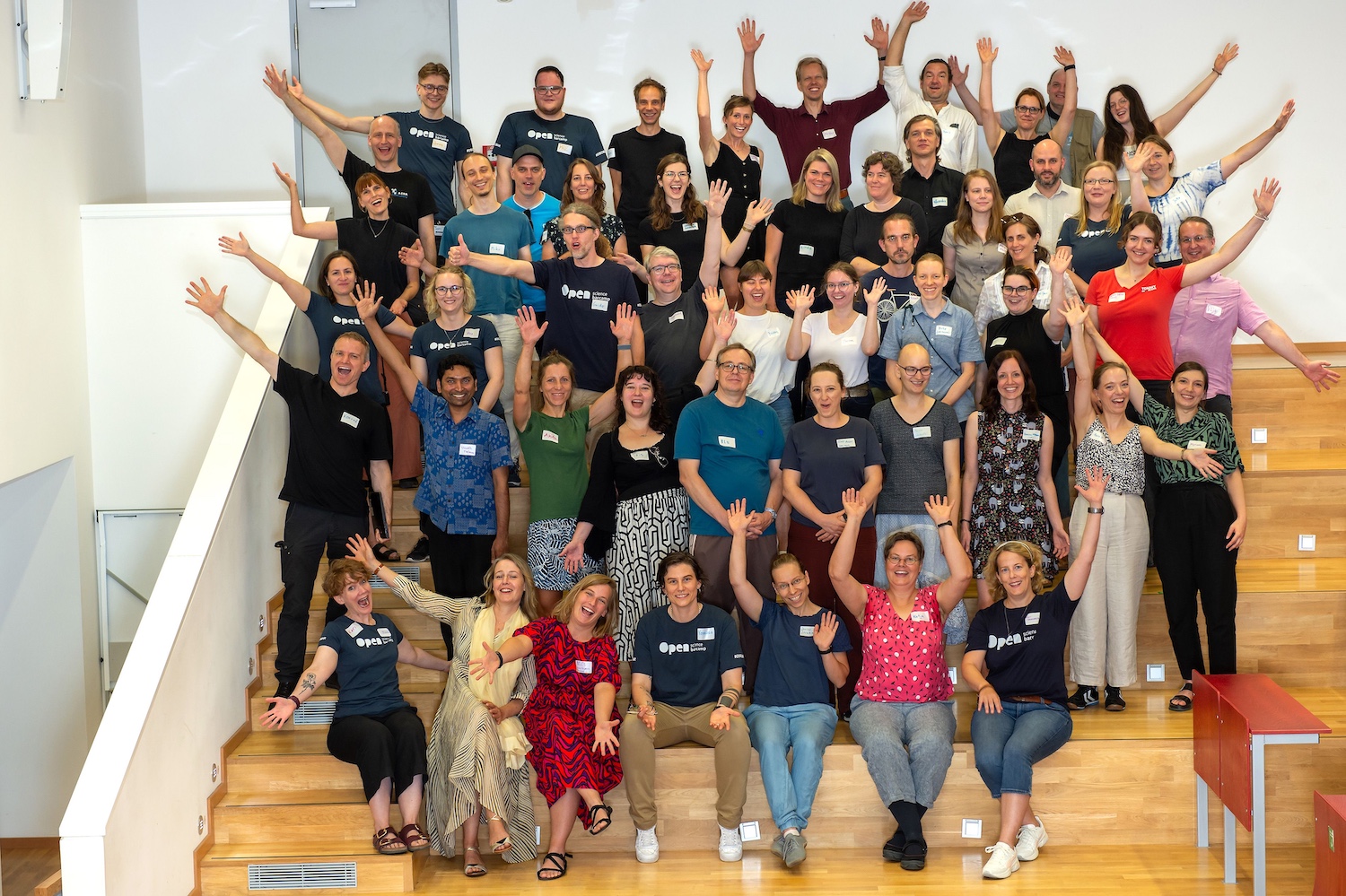
First, however, we focused on the unique features of the barcamp and asked the participants: “Why are you here today?” The numerous positive and highly supportive responses truly warmed our hearts. A good mix of different professional backgrounds and disciplines was mentioned. Additionally, the fact that practitioners are strongly represented and that the broad topic of Open Science allows a space for a wide variety of (interrelated) topic suggestions, was appreciated. Combined with the low level participation format of a Barcamp, this creates a creative environment where people can learn from each other, develop ideas together, and contribute actively.
In short, we can say: ‘Never change a running system’. However, ideas for further development were also discussed. One idea was to carry the concept of the Barcamp Open Science forward and advocate for the establishment of similar formats in other countries, passing on the necessary knowledge to do so. Another idea was to pass on the output generated on-site to relevant networks and initiatives, so that it can be picked up and not get lost. After all, good approaches and inspirations often emerge on-site, and participants feel that someone should continue working on them. We are looking forward to the next 10 years!
This might also interest you:
- The blog of the ZBW – The Future is Open Science, episode 44: Ten years of Barcamp Open Science: Ten years at the interface of science and openness (German) with Guido Scherp and Lambert Heller
- Barcamp Open Science 2023: So Much has Happened and so Much Still Needs to Happen!
Dr Susann Auer is a plant biologist and lecturer at TU Dresden (TUD) and one of the leaders of the Reproducibility 4 Everyone training initiative which gives workshops on reproducible research and by now has reached over 3,500 scientists worldwide. At the TUD she trains a new generation of students to establish reproducible working routines and good data management practices.
Tamara Heck is leader of the unit information management at the Information Centre for Education at the DIPF. She co-organises #oscibar and is member of the Leibniz Strategy Forum on Open Science, where she currently investigates how policy papers impact the development of Open Science practices.
Dr Constance Holman is a research manager in Faculty 1 at the HTW Berlin – University of Applied Sciences, where she is a member of the new Interessengemeinschaft Open Science. She has previously worked on projects incentivizing Open Science activities in the biomedical sciences, particularly for early-career researchers. She can be found on LinkedIn.
Ben Kaden is team member of the networking and competence centre Open Access Brandenburg (Vernetzungs- und Kompetenzstelle Open Access Brandenburg) and co-founder and editor of the Open Access journal “LIBREAS. Library Ideas”.
Friederike Kramer is deputy head of the University Library of the Berlin University of Arts (UdK) and the Open Access delegate of UdK. She co-founded the open-acces.network group “Open Access in the Arts” and supports all aspects of Open Research / Open Science in the Arts and Arts related disciplines.
Mika Pflüger works on past and likely future greenhouse gas emissions of nation states as a research software engineer at Climate Resource, a climate science consultancy. In particular, he works on the PRIMAP-hist open dataset of historic greenhouse gas emissions and the Open Access NDC country factsheets showing the climate commitments of countries. He can be found on Mastodon.
Dr Guido Scherp is head of the “OpenScienceTransfer” department at the ZBW – Leibniz Information Centre for Economics. He can also be found on LinkedIn and Mastodon.
Heidi Seibold is co-founder of the Digital Research Academy and Open Science Enthusiast. She is also a steering group member of the German Reproducibility Network and board member of Open Innovation in Life Sciences (OILS).
Claudia Voigtländer is Open Research Referee at the library of the Alice Salomon University of Applied Sciences Berlin. She has a background in scholar-led as well as commercial publishing in the context of art, science & technology studies.
Dr Anja Zeltner is the team lead of the networking and competence centre Open Access Brandenburg (Vernetzungs- und Kompetenzstelle Open Access Brandenburg) and has previously worked in various roles at academic publishing houses. She can be found on Linkedin and ORCID.
All photos: Bettina Ausserhofer©
View Comments

Organising and Financing Diamond Open Access: How can this be achieved in collaboration with others?
What can go wrong and what makes it easier for libraries to participate in...

